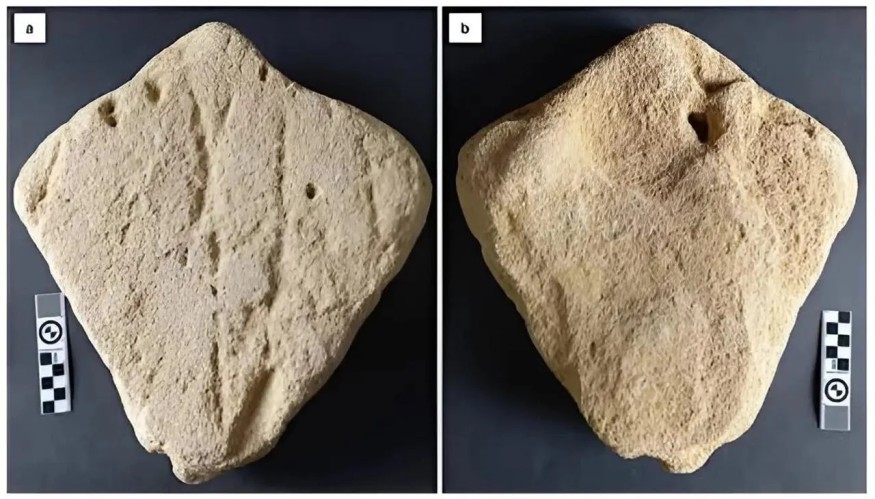Ancient Stingray Sculpture Discovery Rewrites Early Human Artistic Evolution

In a groundbreaking discovery, investigators have unearthed what appears to be an ancient sand figure depicting a stingray, potentially rewriting the timeline of human artistic trials. Published in the Rock Art Research journal, the study conducted by experts from Nelson Mandela University and the South African Institute for Aquatic Biodiversity has stirred significant debate in the archaeological community.
Dating and Classification
The published artwork, initially mistaken as a natural rock formation near Still Bay along South Africa's coast in 2018, underwent optically stimulated luminescence dating. This technique revealed that the sculpture, classified as an ammoglyph-a tracing made in sand that solidified into stone-dates back approximately 130,000 years. The discovery challenges established notions of when humans first engaged in figurative artistry.
Dr. John Smith, lead researcher and archaeologist at Nelson Mandela University expressed astonishment at the implications of their findings. "This discovery pushes back the origins of representational art by a staggering margin," he remarked. "The symmetry and deliberate shaping of the stingray suggest a level of artistic intentionality previously unseen at this early stage of human history."
Cultural Significance
The cultural significance of the stingray remains a subject of speculation. Experts hypothesize that such depictions could have served practical purposes, such as recording environmental observations or rituals related to hunting and gathering. Alternatively, the stingray might have held symbolic importance in early human storytelling, possibly representing mythological creatures or spiritual entities.
Prior to this discovery, the oldest recognized example of figurative art was a cave painting depicting a pig found in Indonesia, dated approximately 45,000 years ago. The new findings from South Africa suggest that humans were engaged in sophisticated artistic practices long before previously believed, potentially bridging the gap between abstract and realistic representations in early art forms.
Historical Context
The team places the creation of the stingray sculpture within the Middle Stone Age, significantly predating known examples of figurative art by nearly 85,000 years. Complex artistic creations by early human populations are also new factors relating to this epoch marked by improved technology and cultural evolution.
Nevertheless, these results prompt various implications that require more extensive analysis and peer review. Both archaeologists and anthropologists look forward to further investigations that may provide insights into the global prospects of early creativity among humans and how creativity has evolved for centuries.
In conclusion, identifying the ancient stingray sculpture challenges our understanding of human cultural development, emphasizing the enduring impulse of creativity and expression deep within our evolutionary history. This discovery not only suggests early humans possessed advanced cognitive abilities and symbolic thought far earlier than previously thought but also prompts a reevaluation of the origins and significance of artistic expression in shaping early societies. As researchers delve further into this remarkable find, it promises to reshape our perception of ancient cultures, shedding light on their sophisticated understanding of the natural world and their ability to convey complex narratives through art.
From Digital Models to 3D-Printed Homes: Jaspreet Kaur Lall Explains How the Innovation Changes the Construction Industry

Future Belongs to Green Construction: Sampath Kumar Paspunoori Explains One of the Key Trends in the Construction Industry

Kamala Harris' Campaign Ad Uses Iconic Visuals from Carrie Mae Weems to Connect with Voters

Historic Ancient Roman Ruins in Baalbek Remain Strong After Israeli Air Strikes; Locals Seek Cultural Protection

4 Ways to Honor Departed Loved Ones in Your Home Design










